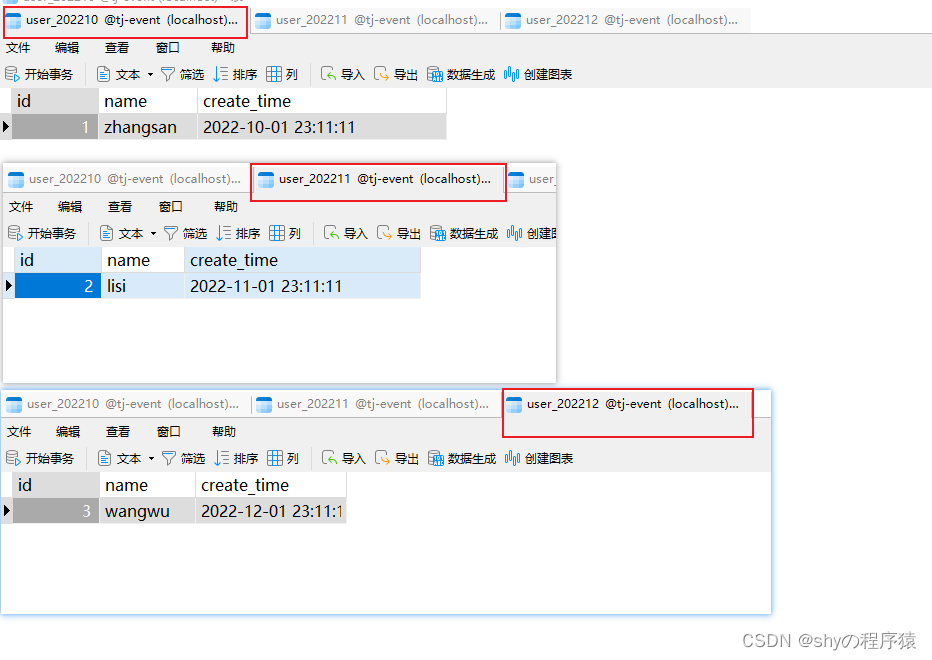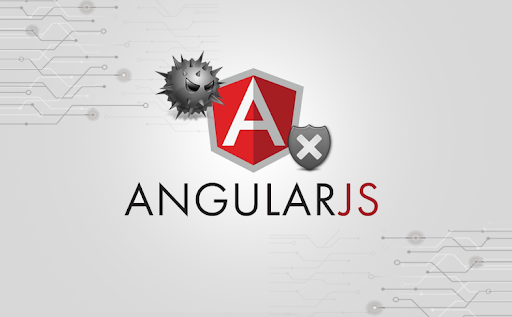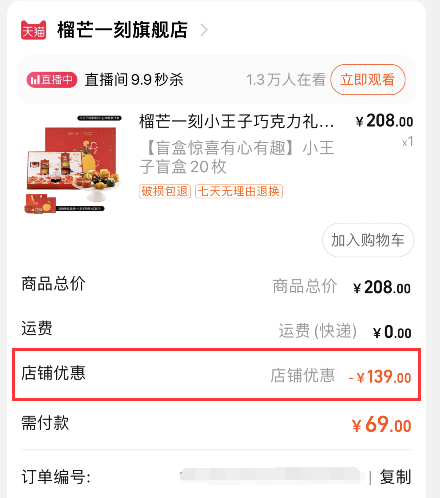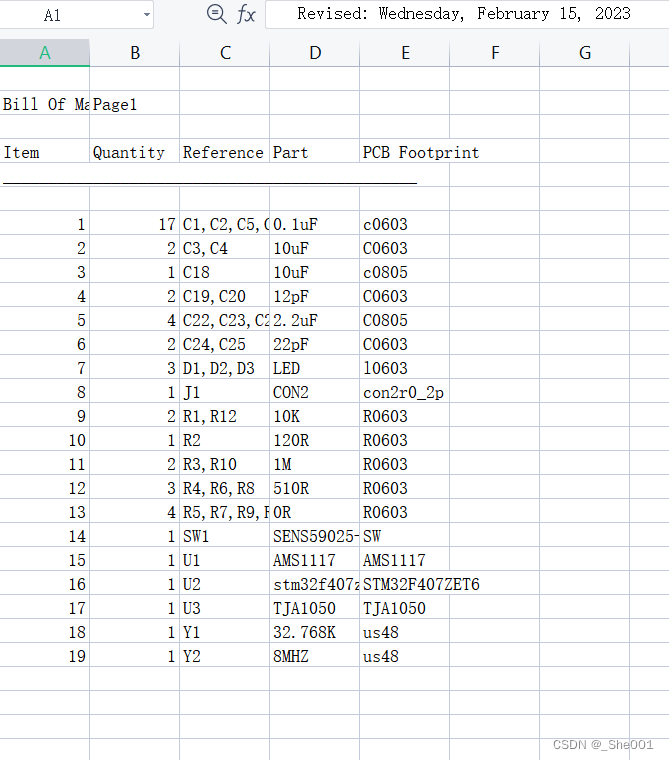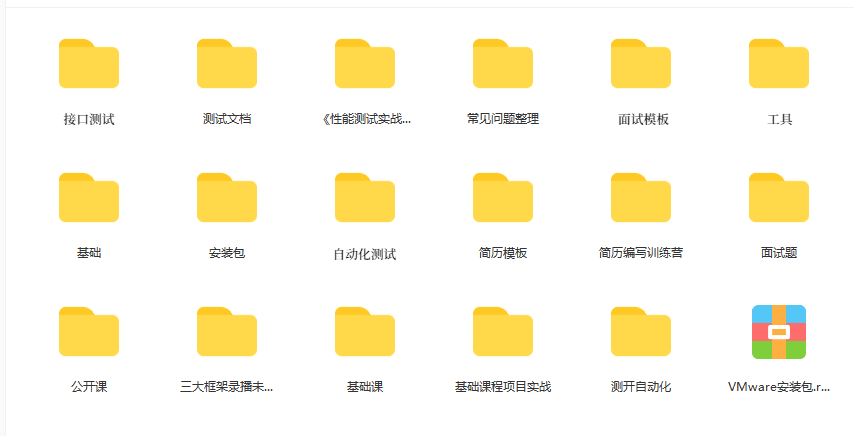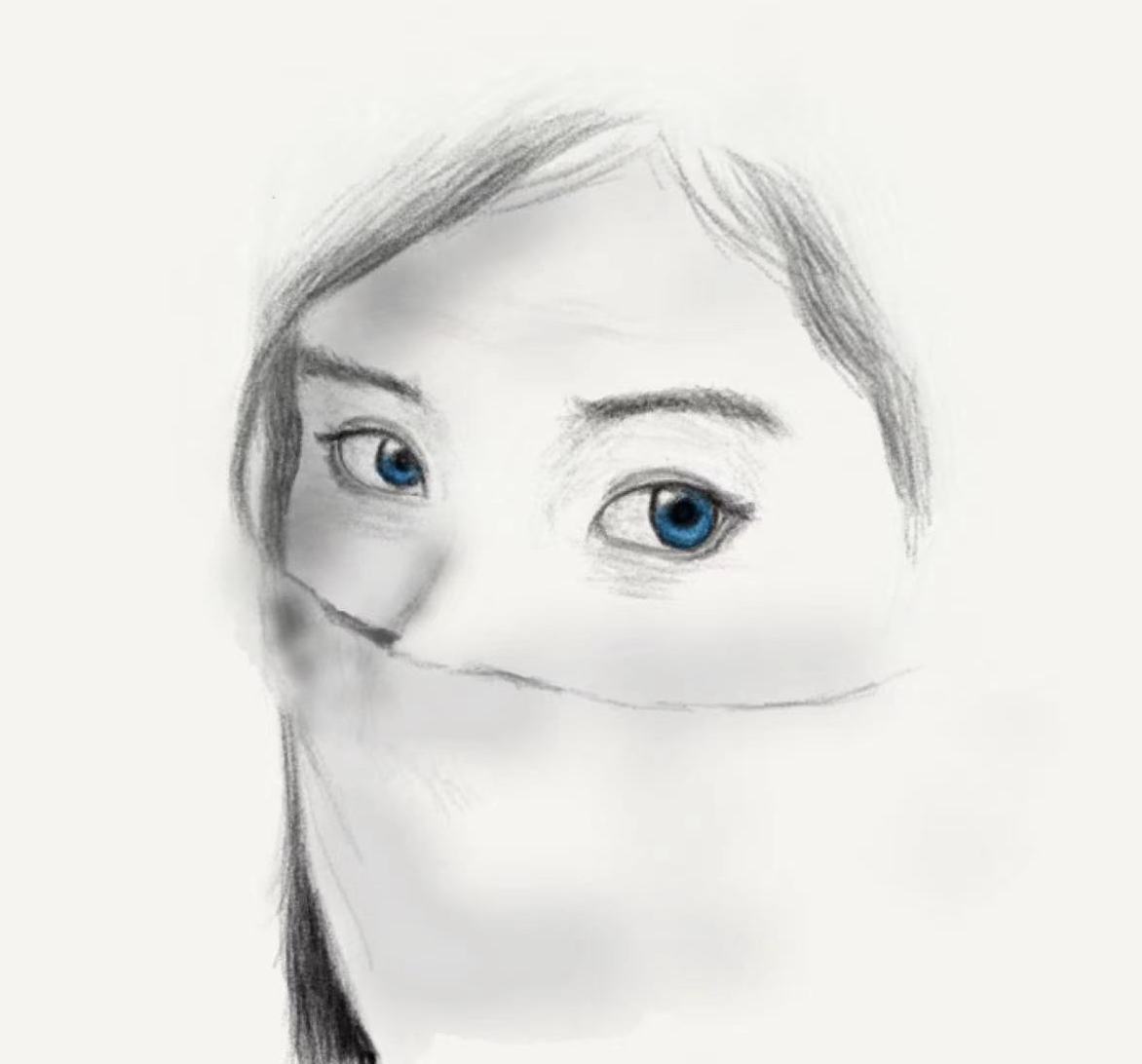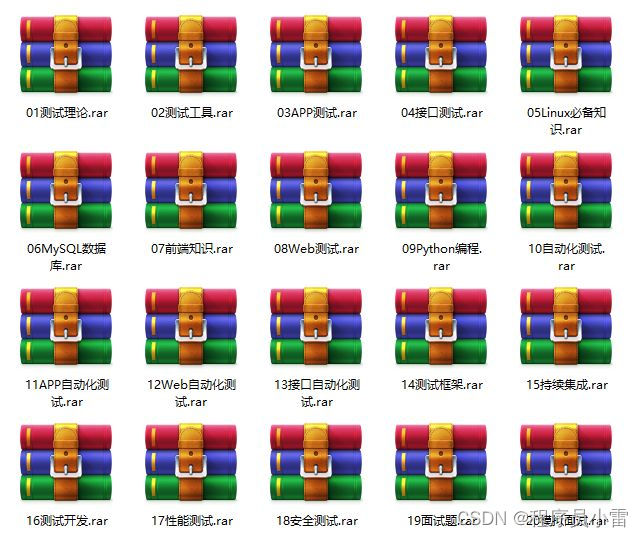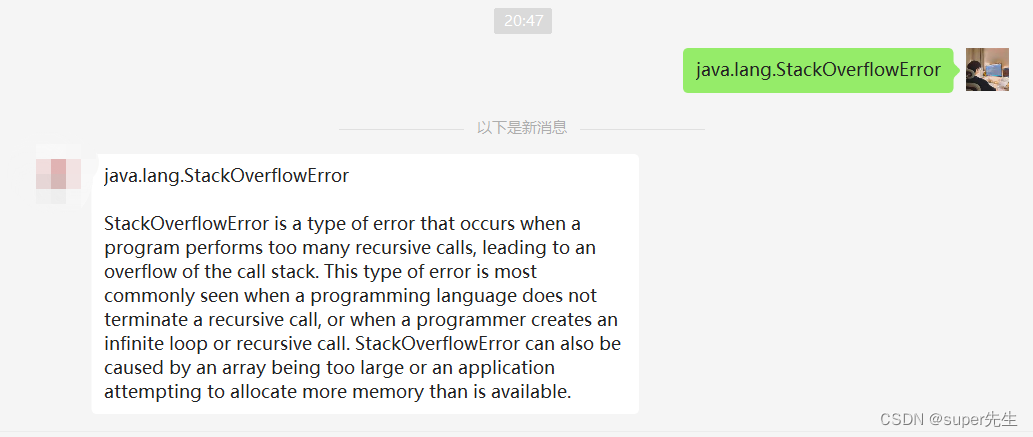最近邻
简单来说就是x方向和y方向分别复制
#!/usr/bin/env python
# _*_ coding:utf-8 _*_
import numpy as np
import torch
from cv2 import cv2
from torch import nn
def numpy2tensor(x: np.ndarray) -> torch.Tensor:
"""
(H,W) -> (1, 1, H, W)
(H,W,C) -> (1, C, H, W)
"""
if x.ndim == 2:
x = x[:, :, None]
else:
x = cv2.cvtColor(x, cv2.COLOR_BGR2RGB)
return torch.from_numpy(x.transpose((2, 0, 1))).contiguous().unsqueeze(0)
def tensor2numpy(x: torch.Tensor) -> np.ndarray:
"""
(B,C,H,W) -> (H, W, C)
(B,1,H,W) -> (H, W)
"""
x = x.clone().detach()
x = x.to(torch.device('cpu'))
x = x.squeeze(0)
# x = x.mul_(255).add_(0.5).clamp_(0, 255)
x = x.permute(1, 2, 0).type(torch.uint8).numpy()
if x.shape[-1] == 3:
return cv2.cvtColor(x, cv2.COLOR_RGB2BGR)
return np.squeeze(x, axis=2)
def nearest1(x: np.ndarray, upscale: int) -> np.ndarray:
if 2 == x.ndim:
x = x[:, :, None]
x = x.transpose((2, 0, 1))
c, h, w = x.shape
h_index = np.arange(h * upscale) // upscale
w_index = np.arange(w * upscale) // upscale
x = x[:, :, w_index]
x = x[:, h_index, :]
x = x.transpose((1, 2, 0))
if 1 == c:
return np.squeeze(x, -1)
return x
def nearest2(x: np.ndarray, upscale: int) -> np.ndarray:
if 2 == x.ndim:
x = x[:, :, None]
x = x.transpose((2, 0, 1))
c, h, w = x.shape
x = x[:, :, None, :, None].repeat(upscale, axis=-1).repeat(upscale, axis=2).reshape(c, h * upscale, w * upscale)
x = x.transpose((1, 2, 0))
if 1 == c:
return np.squeeze(x, -1)
return x
def nearest3(x: torch.Tensor, upscale: int) -> torch.Tensor:
return x[:, :, :, None, :, None].expand(-1, -1, -1, upscale, -1, upscale).reshape(x.size(0), x.size(1),
x.size(2) * upscale,
x.size(3) * upscale)
if __name__ == '__main__':
torch.use_deterministic_algorithms(True)
# torch.backends.cudnn.enabled = False
torch.backends.cudnn.benchmark = False
torch.backends.cudnn.deterministic = True
scale = 2
img = cv2.imread('lena.png')
h, w, _ = img.shape
new_h = h * scale
new_w = w * scale
tensor = numpy2tensor(img)
m = nn.Upsample(scale_factor=2, mode='nearest')
result = [
nearest1(img, scale),
nearest2(img, scale),
cv2.resize(img, (new_w, new_h), interpolation=cv2.INTER_NEAREST),
tensor2numpy(nearest3(tensor, scale)),
tensor2numpy(m(tensor)),
tensor2numpy(m(tensor.to(torch.device('cuda:0'))))
]
for i in range(1, len(result)):
print(np.allclose(result[i], result[i - 1]))
双线性插值
一维线性插值
已知两个点
(
x
1
,
y
1
)
,
(
x
2
,
y
2
)
\left(x_1,y_1\right),\left(x_2,y_2\right)
(x1,y1),(x2,y2)
给定一个
x
x
x,问在这个直线上,对应的
y
y
y是多少
y
−
y
1
x
−
x
1
=
y
2
−
y
1
x
2
−
x
1
y
=
y
1
+
y
2
−
y
1
x
2
−
x
1
(
x
−
x
1
)
y
=
x
2
−
x
x
2
−
x
1
y
1
+
x
−
x
1
x
2
−
x
1
y
2
\begin{aligned} \frac{y - y_1}{x - x_1} &= \frac{y_2 - y_1}{x_2 - x_1}\\ y &= y_1 + \frac{y_2 - y_1}{x_2 - x_1}\left(x - x_1\right)\\ y &= \frac{x_2-x}{x_2 - x_1}y_1 + \frac{x-x_1}{x_2 - x_1}y_2\\ \end{aligned}
x−x1y−y1yy=x2−x1y2−y1=y1+x2−x1y2−y1(x−x1)=x2−x1x2−xy1+x2−x1x−x1y2
相当于两边加权求和
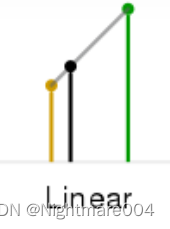
二维的时候类似
在
x
x
x方向插值,然后在
y
y
y方向插值
f
(
x
,
y
1
)
=
x
2
−
x
x
2
−
x
1
f
(
Q
11
)
+
x
−
x
1
x
2
−
x
1
f
(
Q
21
)
f
(
x
,
y
2
)
=
x
2
−
x
x
2
−
x
1
f
(
Q
12
)
+
x
−
x
1
x
2
−
x
1
f
(
Q
22
)
\begin{aligned} f\left(x,y_1\right) &= \frac{x_2-x}{x_2 - x_1}f\left(Q_{11}\right) + \frac{x-x_1}{x_2 - x_1}f\left(Q_{21}\right)\\ f\left(x,y_2\right) &= \frac{x_2-x}{x_2 - x_1}f\left(Q_{12}\right) + \frac{x-x_1}{x_2 - x_1}f\left(Q_{22}\right)\\ \end{aligned}
f(x,y1)f(x,y2)=x2−x1x2−xf(Q11)+x2−x1x−x1f(Q21)=x2−x1x2−xf(Q12)+x2−x1x−x1f(Q22)
其中
f
(
Q
i
j
)
=
f
(
x
i
,
y
j
)
f\left(Q_{ij}\right) = f\left(x_i,y_j\right)
f(Qij)=f(xi,yj)
f
(
x
,
y
)
=
y
2
−
y
y
2
−
y
1
f
(
x
,
y
1
)
+
y
−
y
1
y
2
−
y
1
f
(
x
,
y
2
)
=
y
2
−
y
y
2
−
y
1
(
x
2
−
x
x
2
−
x
1
f
(
Q
11
)
+
x
−
x
1
x
2
−
x
1
f
(
Q
21
)
)
+
y
−
y
1
y
2
−
y
1
(
x
2
−
x
x
2
−
x
1
f
(
Q
12
)
+
x
−
x
1
x
2
−
x
1
f
(
Q
22
)
)
=
1
(
y
2
−
y
1
)
(
x
2
−
x
1
)
(
f
(
Q
11
)
(
x
2
−
x
)
(
y
2
−
y
)
+
f
(
Q
21
)
(
x
−
x
1
)
(
y
2
−
y
)
+
f
(
Q
12
)
(
x
2
−
x
)
(
y
−
y
1
)
+
f
(
Q
22
)
(
x
−
x
1
)
(
y
−
y
1
)
)
=
1
(
y
2
−
y
1
)
(
x
2
−
x
1
)
(
x
2
−
x
x
−
x
1
)
T
(
f
(
Q
11
)
f
(
Q
12
)
f
(
Q
21
)
f
(
Q
22
)
)
(
y
2
−
y
y
−
y
1
)
\begin{aligned} f\left(x,y\right) &= \frac{y_2 - y}{y_2 - y_1}f\left(x,y_1\right) + \frac{y-y_1}{y_2 - y_1}f\left(x,y_2\right)\\ &= \frac{y_2 - y}{y_2 - y_1}\left(\frac{x_2-x}{x_2 - x_1}f\left(Q_{11}\right) + \frac{x-x_1}{x_2 - x_1}f\left(Q_{21}\right)\right) + \frac{y-y_1}{y_2 - y_1}\left(\frac{x_2-x}{x_2 - x_1}f\left(Q_{12}\right) + \frac{x-x_1}{x_2 - x_1}f\left(Q_{22}\right)\right)\\ &= \frac{1}{\left(y_2 - y_1\right)\left(x_2 - x_1\right)}\left(f\left(Q_{11}\right)\left(x_2 - x\right)\left(y_2 - y\right) + f\left(Q_{21}\right)\left(x-x_1\right)\left(y_2-y\right) + f\left(Q_{12}\right)\left(x_2-x\right)\left(y-y_1\right) + f\left(Q_{22}\right)\left(x-x_1\right)\left(y-y_1\right)\right) \\ &= \frac{1}{\left(y_2 - y_1\right)\left(x_2 - x_1\right)}\begin{pmatrix} x_2-x\\ x-x_1\\ \end{pmatrix}^T\begin{pmatrix} f\left(Q_{11}\right)&f\left(Q_{12}\right)\\ f\left(Q_{21}\right)&f\left(Q_{22}\right)\\ \end{pmatrix}\begin{pmatrix} y_2-y\\ y-y_1\\ \end{pmatrix} \end{aligned}
f(x,y)=y2−y1y2−yf(x,y1)+y2−y1y−y1f(x,y2)=y2−y1y2−y(x2−x1x2−xf(Q11)+x2−x1x−x1f(Q21))+y2−y1y−y1(x2−x1x2−xf(Q12)+x2−x1x−x1f(Q22))=(y2−y1)(x2−x1)1(f(Q11)(x2−x)(y2−y)+f(Q21)(x−x1)(y2−y)+f(Q12)(x2−x)(y−y1)+f(Q22)(x−x1)(y−y1))=(y2−y1)(x2−x1)1(x2−xx−x1)T(f(Q11)f(Q21)f(Q12)f(Q22))(y2−yy−y1)
容易验证先在
y
y
y方向,然后
x
x
x方向,得到的结果是一样的
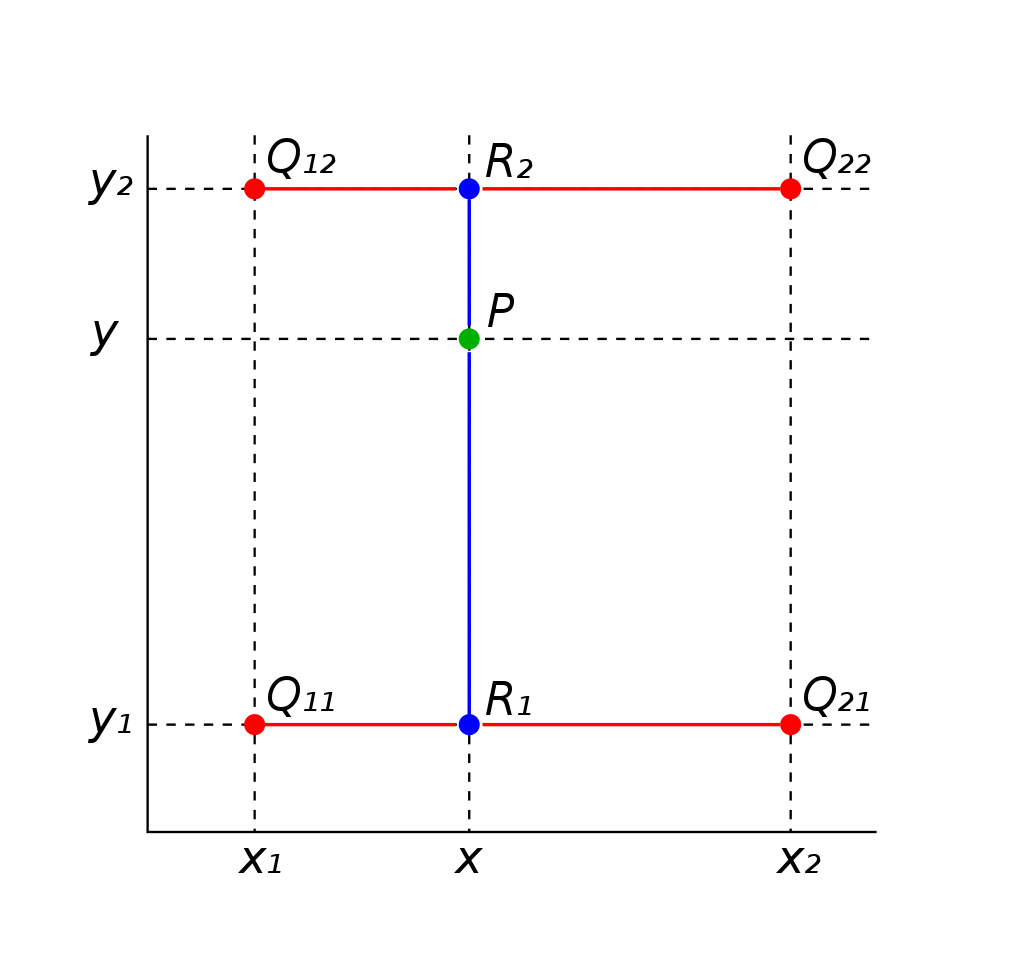
pytorch align_corners=False
把
(
3
,
3
)
\left(3,3\right)
(3,3)的图像放大成
(
9
,
9
)
\left(9,9\right)
(9,9)
原本图像的中心是
(
1
,
1
)
\left(1,1\right)
(1,1),放大后中心是
(
4
,
4
)
\left(4,4\right)
(4,4)
但是这时候就会发现
4
1
≠
3
1
\frac{4}{1}\neq \frac{3}{1}
14=13,中心对不上
而实际上,中心计算公式为
s
r
c
=
(
d
s
t
+
0.5
)
1
s
c
a
l
e
−
0.5
=
(
d
s
t
+
0.5
)
s
r
c
s
i
z
e
d
s
t
s
i
z
e
−
0.5
src = \left(dst + 0.5\right)\frac{1}{scale}-0.5 = \left(dst + 0.5\right)\frac{src_{size}}{dst_{size}}-0.5
src=(dst+0.5)scale1−0.5=(dst+0.5)dstsizesrcsize−0.5
然后一些其他细节
1.
s
r
c
src
src计算完了,要
c
l
i
p
clip
clip到
[
0
,
s
i
z
e
−
1
]
\left[0,size-1\right]
[0,size−1]
2.
x
2
−
x
1
=
y
2
−
y
1
=
1
x_2 - x_1 = y_2 - y_1 = 1
x2−x1=y2−y1=1
3.
x
1
,
y
1
x_1,y_1
x1,y1要
c
l
i
p
clip
clip到
[
0
,
s
i
z
e
−
2
]
\left[0,size-2\right]
[0,size−2]之间,防止
x
2
,
y
2
x_2,y_2
x2,y2越界
#!/usr/bin/env python
# _*_ coding:utf-8 _*_
import numpy as np
import torch
from cv2 import cv2
from torch import nn
def numpy2tensor(x: np.ndarray) -> torch.FloatTensor:
"""
(H,W) -> (1, 1, H, W)
(H,W,C) -> (1, C, H, W)
"""
if x.ndim == 2:
x = x[..., None]
else:
x = cv2.cvtColor(x, cv2.COLOR_BGR2RGB)
return torch.from_numpy(x.transpose((2, 0, 1))).contiguous().unsqueeze(0).float()
def tensor2numpy(x: torch.FloatTensor) -> np.ndarray:
"""
(B,C,H,W) -> (H, W, C)
(B,1,H,W) -> (H, W)
"""
x = x.clone().detach()
x = x.to(torch.device('cpu'))
x = x.squeeze(0)
x = x.clamp_(0, 255)
# x = x.permute(1, 2, 0).type(torch.uint8).numpy()
x = x.permute(1, 2, 0).numpy()
if x.shape[-1] == 3:
return cv2.cvtColor(x, cv2.COLOR_RGB2BGR)
return np.squeeze(x, axis=2)
def bilinear1(img: np.ndarray, upscale: int, align_corners=False) -> np.ndarray:
if 2 == img.ndim:
img = img[..., None]
h, w, c = img.shape
new_h, new_w = h * upscale, w * upscale
result = np.zeros((new_h, new_w, c), dtype=float)
for i in range(new_h):
for j in range(new_w):
if not align_corners:
x = np.clip((i + 0.5) * h / new_h - 0.5, 0, h - 1)
y = np.clip((j + 0.5) * w / new_w - 0.5, 0, w - 1)
x1 = min(int(np.floor(x)), h - 2)
y1 = min(int(np.floor(y)), w - 2)
x2 = x1 + 1
y2 = y1 + 1
else:
x = np.clip(i * (h - 1) / (new_h - 1), 0, h - 1)
y = np.clip(j * (w - 1) / (new_w - 1), 0, w - 1)
x1 = int(np.floor(x))
y1 = int(np.floor(y))
x2 = int(np.ceil(x))
y2 = int(np.ceil(y))
q11 = img[x1, y1]
q12 = img[x1, y2]
q21 = img[x2, y1]
q22 = img[x2, y2]
u = x2 - x
v = y2 - y
_1_u = 1 - u
_1_v = 1 - v
result[i, j] = (q11 * u * v + q21 * _1_u * v + q12 * u * _1_v + q22 * _1_u * _1_v)
if 1 == c:
return result.squeeze(-1)
return result
def bilinear2(img: np.ndarray, upscale: int, align_corners=False) -> np.ndarray:
if 2 == img.ndim:
img = img[..., None]
h, w, c = img.shape
new_h, new_w = h * upscale, w * upscale
if not align_corners:
x = np.clip((np.arange(new_h) + 0.5) * h / new_h - 0.5, 0, h - 1)
y = np.clip((np.arange(new_w) + 0.5) * w / new_w - 0.5, 0, w - 1)
x = np.repeat(x[:, None], new_w, axis=1)
y = np.repeat(y[None, :], new_h, axis=0)
x1 = np.clip(np.floor(x), 0, h - 2).astype(int)
y1 = np.clip(np.floor(y), 0, w - 2).astype(int)
x2 = x1 + 1
y2 = y1 + 1
else:
x = np.clip(np.arange(new_h) * (h - 1) / (new_h - 1), 0, h - 1)
y = np.clip(np.arange(new_w) * (w - 1) / (new_w - 1), 0, w - 1)
x = np.repeat(x[:, None], new_w, axis=1)
y = np.repeat(y[None, :], new_h, axis=0)
x1 = np.floor(x).astype(int)
y1 = np.floor(y).astype(int)
x2 = np.ceil(x).astype(int)
y2 = np.ceil(y).astype(int)
q11 = img[x1, y1]
q12 = img[x1, y2]
q21 = img[x2, y1]
q22 = img[x2, y2]
u = (x2 - x)[..., None]
v = (y2 - y)[..., None]
_1_u = 1 - u
_1_v = 1 - v
w11 = u * v
w12 = u * _1_v
w21 = _1_u * v
w22 = _1_u * _1_v
result = q11 * w11 + q12 * w12 + q21 * w21 + q22 * w22
if 1 == c:
return result.squeeze(-1)
return result
def bilinear3(img: torch.FloatTensor, upscale: int, align_corners=False) -> torch.FloatTensor:
B, c, h, w = img.shape
new_h, new_w = h * upscale, w * upscale
result = torch.zeros(B, c, new_h, new_w, dtype=torch.float)
for i in range(new_h):
for j in range(new_w):
if not align_corners:
x = np.clip((i + 0.5) * h / new_h - 0.5, 0, h - 1)
y = np.clip((j + 0.5) * w / new_w - 0.5, 0, w - 1)
x1 = min(int(np.floor(x)), h - 2)
y1 = min(int(np.floor(y)), w - 2)
x2 = x1 + 1
y2 = y1 + 1
else:
x = np.clip(i * (h - 1) / (new_h - 1), 0, h - 1)
y = np.clip(j * (w - 1) / (new_w - 1), 0, w - 1)
x1 = int(np.floor(x))
y1 = int(np.floor(y))
x2 = int(np.ceil(x))
y2 = int(np.ceil(y))
q11 = img[..., x1, y1]
q12 = img[..., x1, y2]
q21 = img[..., x2, y1]
q22 = img[..., x2, y2]
u = x2 - x
v = y2 - y
_1_u = 1 - u
_1_v = 1 - v
result[..., i, j] = (q11 * u * v + q21 * _1_u * v + q12 * u * _1_v + q22 * _1_u * _1_v)
return result
def bilinear4(img: torch.FloatTensor, upscale: int, align_corners=False) -> torch.FloatTensor:
B, c, h, w = img.shape
new_h, new_w = h * upscale, w * upscale
if not align_corners:
x = torch.clip((torch.arange(new_h, dtype=torch.double) + 0.5) * h / new_h - 0.5, 0, h - 1)
y = torch.clip((torch.arange(new_w, dtype=torch.double) + 0.5) * w / new_w - 0.5, 0, w - 1)
x = x[:, None].expand(-1, new_w)
y = y[None, :].expand(new_h, -1)
x1 = torch.clip(torch.floor(x), 0, h - 2).long()
y1 = torch.clip(torch.floor(y), 0, w - 2).long()
x2 = x1 + 1
y2 = y1 + 1
else:
x = torch.clip(torch.arange(new_h, dtype=torch.double) * (h - 1) / (new_h - 1), 0, h - 1)
y = torch.clip(torch.arange(new_w, dtype=torch.double) * (w - 1) / (new_w - 1), 0, w - 1)
x = x[:, None].expand(-1, new_w)
y = y[None, :].expand(new_h, -1)
x1 = torch.floor(x).long()
y1 = torch.floor(y).long()
x2 = torch.ceil(x).long()
y2 = torch.ceil(y).long()
q11 = img[..., x1, y1]
q12 = img[..., x1, y2]
q21 = img[..., x2, y1]
q22 = img[..., x2, y2]
u = (x2 - x)[None, None, ...]
v = (y2 - y)[None, None, ...]
_1_u = 1 - u
_1_v = 1 - v
w11 = u * v
w12 = u * _1_v
w21 = _1_u * v
w22 = _1_u * _1_v
result = q11 * w11 + q12 * w12 + q21 * w21 + q22 * w22
return result.float()
return result
if __name__ == '__main__':
torch.use_deterministic_algorithms(True)
# torch.backends.cudnn.enabled = False
torch.backends.cudnn.benchmark = False
torch.backends.cudnn.deterministic = True
x = cv2.imread('lena.png')
h, w = x.shape[:2]
scale = 2
new_h = h * scale
new_w = w * scale
tensor = numpy2tensor(x)
m1 = nn.Upsample(scale_factor=2, mode='bilinear', align_corners=True)
m2 = nn.Upsample(scale_factor=2, mode='bilinear', align_corners=False)
# align_corners_true = [
# tensor2numpy(m1(tensor)),
# bilinear1(x, 2, align_corners=True),
# bilinear2(x, 2, align_corners=True),
# tensor2numpy(bilinear3(tensor, 2, align_corners=True)),
# tensor2numpy(bilinear4(tensor, 2, align_corners=True)),
# tensor2numpy(m1(tensor.to(torch.device('cuda:0')))),
# cv2.resize(x, (new_w, new_h), interpolation=cv2.INTER_LINEAR)
# ]
# # 0==5 0!=1 0!=6 1==2==3==4 1!=6
# for i in range(1, len(align_corners_true)):
# print(np.allclose(align_corners_true[i], align_corners_true[i - 1]))
#
# print()
# print()
align_corners_false = [
tensor2numpy(m2(tensor)),
bilinear1(x, 2, align_corners=False),
bilinear2(x, 2, align_corners=False),
tensor2numpy(bilinear3(tensor, 2, align_corners=False)),
tensor2numpy(bilinear4(tensor, 2, align_corners=False)),
tensor2numpy(m2(tensor.to(torch.device('cuda:0')))),
cv2.resize(x, (new_w, new_h), interpolation=cv2.INTER_LINEAR)
]
# 除了opencv 其他都一样
for i in range(1, len(align_corners_false)):
print(np.allclose(align_corners_false[i], align_corners_false[i - 1]))
pytorch align_corners=True
这个图,上面是原图,下面是插值后的图
将
6
6
6插值成
12
12
12
这里的操作相当于原图有
5
5
5个区域,插值后有
11
11
11个区域
中心计算公式为
s
r
c
=
d
s
t
×
s
r
c
s
i
z
e
−
1
d
s
t
s
i
z
e
−
1
src = dst\times\frac{src_{size} -1}{dst_{size} - 1}
src=dst×dstsize−1srcsize−1

这个代码写的有点问题
#!/usr/bin/env python
# _*_ coding:utf-8 _*_
import numpy as np
import torch
from cv2 import cv2
from torch import nn
def numpy2tensor(x: np.ndarray) -> torch.FloatTensor:
"""
(H,W) -> (1, 1, H, W)
(H,W,C) -> (1, C, H, W)
"""
if x.ndim == 2:
x = x[..., None]
else:
x = cv2.cvtColor(x, cv2.COLOR_BGR2RGB)
return torch.from_numpy(x.transpose((2, 0, 1))).contiguous().unsqueeze(0).float()
def tensor2numpy(x: torch.FloatTensor) -> np.ndarray:
"""
(B,C,H,W) -> (H, W, C)
(B,1,H,W) -> (H, W)
"""
x = x.clone().detach()
x = x.to(torch.device('cpu'))
x = x.squeeze(0)
x = x.clamp_(0, 255)
# x = x.permute(1, 2, 0).type(torch.uint8).numpy()
x = x.permute(1, 2, 0).numpy()
if x.shape[-1] == 3:
return cv2.cvtColor(x, cv2.COLOR_RGB2BGR)
return np.squeeze(x, axis=2)
def bilinear1(img: np.ndarray, upscale: int, align_corners=False) -> np.ndarray:
if 2 == img.ndim:
img = img[..., None]
h, w, c = img.shape
new_h, new_w = h * upscale, w * upscale
result = np.zeros((new_h, new_w, c), dtype=float)
for i in range(new_h):
for j in range(new_w):
if not align_corners:
x = np.clip((i + 0.5) * h / new_h - 0.5, 0, h - 1)
y = np.clip((j + 0.5) * w / new_w - 0.5, 0, w - 1)
x1 = min(int(np.floor(x)), h - 2)
y1 = min(int(np.floor(y)), w - 2)
x2 = x1 + 1
y2 = y1 + 1
else:
x = np.clip(i * (h - 1) / (new_h - 1), 0, h - 1)
y = np.clip(j * (w - 1) / (new_w - 1), 0, w - 1)
x1 = int(np.floor(x))
y1 = int(np.floor(y))
x2 = int(np.ceil(x))
y2 = int(np.ceil(y))
q11 = img[x1, y1]
q12 = img[x1, y2]
q21 = img[x2, y1]
q22 = img[x2, y2]
u = x2 - x
v = y2 - y
_1_u = 1 - u
_1_v = 1 - v
result[i, j] = (q11 * u * v + q21 * _1_u * v + q12 * u * _1_v + q22 * _1_u * _1_v)
if 1 == c:
return result.squeeze(-1)
return result
def bilinear2(img: np.ndarray, upscale: int, align_corners=False) -> np.ndarray:
if 2 == img.ndim:
img = img[..., None]
h, w, c = img.shape
new_h, new_w = h * upscale, w * upscale
if not align_corners:
x = np.clip((np.arange(new_h) + 0.5) * h / new_h - 0.5, 0, h - 1)
y = np.clip((np.arange(new_w) + 0.5) * w / new_w - 0.5, 0, w - 1)
x = np.repeat(x[:, None], new_w, axis=1)
y = np.repeat(y[None, :], new_h, axis=0)
x1 = np.clip(np.floor(x), 0, h - 2).astype(int)
y1 = np.clip(np.floor(y), 0, w - 2).astype(int)
x2 = x1 + 1
y2 = y1 + 1
else:
x = np.clip(np.arange(new_h) * (h - 1) / (new_h - 1), 0, h - 1)
y = np.clip(np.arange(new_w) * (w - 1) / (new_w - 1), 0, w - 1)
x = np.repeat(x[:, None], new_w, axis=1)
y = np.repeat(y[None, :], new_h, axis=0)
x1 = np.floor(x).astype(int)
y1 = np.floor(y).astype(int)
x2 = np.ceil(x).astype(int)
y2 = np.ceil(y).astype(int)
q11 = img[x1, y1]
q12 = img[x1, y2]
q21 = img[x2, y1]
q22 = img[x2, y2]
u = (x2 - x)[..., None]
v = (y2 - y)[..., None]
_1_u = 1 - u
_1_v = 1 - v
w11 = u * v
w12 = u * _1_v
w21 = _1_u * v
w22 = _1_u * _1_v
result = q11 * w11 + q12 * w12 + q21 * w21 + q22 * w22
if 1 == c:
return result.squeeze(-1)
return result
def bilinear3(img: torch.FloatTensor, upscale: int, align_corners=False) -> torch.FloatTensor:
B, c, h, w = img.shape
new_h, new_w = h * upscale, w * upscale
result = torch.zeros(B, c, new_h, new_w, dtype=torch.float)
for i in range(new_h):
for j in range(new_w):
if not align_corners:
x = np.clip((i + 0.5) * h / new_h - 0.5, 0, h - 1)
y = np.clip((j + 0.5) * w / new_w - 0.5, 0, w - 1)
x1 = min(int(np.floor(x)), h - 2)
y1 = min(int(np.floor(y)), w - 2)
x2 = x1 + 1
y2 = y1 + 1
else:
x = np.clip(i * (h - 1) / (new_h - 1), 0, h - 1)
y = np.clip(j * (w - 1) / (new_w - 1), 0, w - 1)
x1 = int(np.floor(x))
y1 = int(np.floor(y))
x2 = int(np.ceil(x))
y2 = int(np.ceil(y))
q11 = img[..., x1, y1]
q12 = img[..., x1, y2]
q21 = img[..., x2, y1]
q22 = img[..., x2, y2]
u = x2 - x
v = y2 - y
_1_u = 1 - u
_1_v = 1 - v
result[..., i, j] = (q11 * u * v + q21 * _1_u * v + q12 * u * _1_v + q22 * _1_u * _1_v)
return result
def bilinear4(img: torch.FloatTensor, upscale: int, align_corners=False) -> torch.FloatTensor:
B, c, h, w = img.shape
new_h, new_w = h * upscale, w * upscale
if not align_corners:
x = torch.clip((torch.arange(new_h, dtype=torch.double) + 0.5) * h / new_h - 0.5, 0, h - 1)
y = torch.clip((torch.arange(new_w, dtype=torch.double) + 0.5) * w / new_w - 0.5, 0, w - 1)
x = x[:, None].expand(-1, new_w)
y = y[None, :].expand(new_h, -1)
x1 = torch.clip(torch.floor(x), 0, h - 2).long()
y1 = torch.clip(torch.floor(y), 0, w - 2).long()
x2 = x1 + 1
y2 = y1 + 1
else:
x = torch.clip(torch.arange(new_h, dtype=torch.double) * (h - 1) / (new_h - 1), 0, h - 1)
y = torch.clip(torch.arange(new_w, dtype=torch.double) * (w - 1) / (new_w - 1), 0, w - 1)
x = x[:, None].expand(-1, new_w)
y = y[None, :].expand(new_h, -1)
x1 = torch.floor(x).long()
y1 = torch.floor(y).long()
x2 = torch.ceil(x).long()
y2 = torch.ceil(y).long()
q11 = img[..., x1, y1]
q12 = img[..., x1, y2]
q21 = img[..., x2, y1]
q22 = img[..., x2, y2]
u = (x2 - x)[None, None, ...]
v = (y2 - y)[None, None, ...]
_1_u = 1 - u
_1_v = 1 - v
w11 = u * v
w12 = u * _1_v
w21 = _1_u * v
w22 = _1_u * _1_v
result = q11 * w11 + q12 * w12 + q21 * w21 + q22 * w22
return result.float()
if __name__ == '__main__':
torch.use_deterministic_algorithms(True)
# torch.backends.cudnn.enabled = False
torch.backends.cudnn.benchmark = False
torch.backends.cudnn.deterministic = True
x = cv2.imread('lena.png')
h, w = x.shape[:2]
scale = 2
new_h = h * scale
new_w = w * scale
tensor = numpy2tensor(x)
m1 = nn.Upsample(scale_factor=2, mode='bilinear', align_corners=True)
m2 = nn.Upsample(scale_factor=2, mode='bilinear', align_corners=False)
align_corners_true = [
tensor2numpy(m1(tensor)),
bilinear1(x, 2, align_corners=True),
bilinear2(x, 2, align_corners=True),
tensor2numpy(bilinear3(tensor, 2, align_corners=True)),
tensor2numpy(bilinear4(tensor, 2, align_corners=True)),
tensor2numpy(m1(tensor.to(torch.device('cuda:0')))),
cv2.resize(x, (new_w, new_h), interpolation=cv2.INTER_LINEAR)
]
# 0==5 0!=1 0!=6 1==2==3==4 1!=6
for i in range(1, len(align_corners_true)):
print(np.allclose(align_corners_true[i], align_corners_true[i - 1]))
print()
print()
align_corners_false = [
tensor2numpy(m2(tensor)),
bilinear1(x, 2, align_corners=False),
bilinear2(x, 2, align_corners=False),
tensor2numpy(bilinear3(tensor, 2, align_corners=False)),
tensor2numpy(bilinear4(tensor, 2, align_corners=False)),
tensor2numpy(m2(tensor.to(torch.device('cuda:0')))),
cv2.resize(x, (new_w, new_h), interpolation=cv2.INTER_LINEAR)
]
# 除了opencv 其他都一样
for i in range(1, len(align_corners_false)):
print(np.allclose(align_corners_false[i], align_corners_false[i - 1]))
参考
https://zhuanlan.zhihu.com/p/141681355
